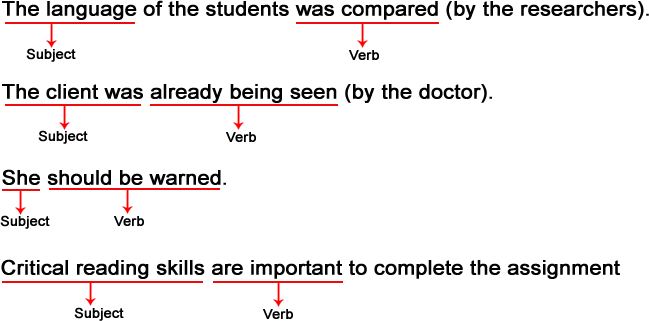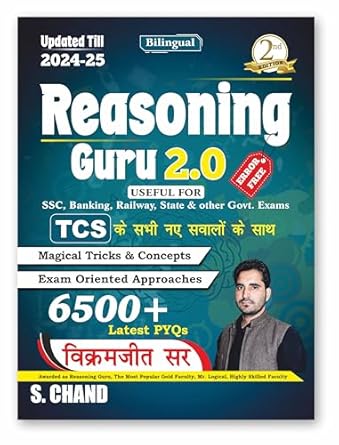 There are two ways to express an action of a subject in relation to its object
There are two ways to express an action of a subject in relation to its object
Voice: The voice of a verb tells whether the subject of the sentence performs or receives the action.
Active voice: In active voice, the subject performs the action expressed by the verb.
Active Voice = Doer/Actor (subject) + Verb in Active Voice + Object of Action
Example : god loves all man.
Passive voice: In passive voice, the subject receives the action expressed by the verb.
Passive Voice = Object of Action + verb in passive voice (form of "to be" + past participle) + by actor (optional)
Example : All men are loved by God.
Active And passive Voice: Tense-wise Rules
1. An Active sentence in the simple present tense has the following structure:
Subject + first form of the verb + object
Example:

2.A passive sentence in the simple present tense has the following structure:
Object of the active sentence + is/am/are + past participle form of the verb + by + subject of the active sentence
Examples:

Changing an assertive sentence into the passive
Active: I write a letter.
Passive: A letter is written by me.
Active: I help you.
Passive: You are helped by me.
Active: I love my parents.
Passive: My parents are loved by me.
Active: We love our country.
Passive: Our country is loved by us.
Changing a negative sentence into the passive
Active: I do not write a letter.
Passive: A letter is not written by me.
Active: I do not abuse my servants.
Passive: My servants are not abused by me.
Active: I do not write novels.
Passive: Novels are not written by me.
Active: He does not tease her.
Passive: She is not teased by him.
Changing an interrogative sentence into the passive
Structure: Is/are/am + object of the active verb + past participle form of the verb + by + subject of the passive
Active: Do you write a letter?
Passive: Is a letter written by you?
Active: Do you write stories?
Passive: Are stories written by you?
Active: Does she make candles?
Passive: Are candles made by her?
Active: Who does not obey you?
Passive: By whom are you not obeyed?
Active: Which newspaper do you read?
Passive: Which newspaper is read by you?
Active: Does she do her duty?
Passive: Is her duty done by her?
Notes:
The object of the active verb becomes the subject of the passive verb. Therefore, sentences which do not have an object cannot be changed into the passive. The following sentences, for instance, cannot be changed into the passive because they do not have objects.
The old man sat in a corner.
The child sleeps.
The wind blows.
The dog barks.
The fire burns.
He laughed aloud.
Note: The following tenses cannot be changed into passive voice.
- Present perfect continuous tense
- Past perfect continuous tense
- Future continuous tense
- Future perfect continuous tense
- Sentence having Intransitive verbs
Intransitive verb cannot be changed into passive voice
The sentences having intransitive verbs (belonging to any tense) cannot be changed into passive voice. The reason is that there is not any object in such sentences and without object of sentence passive voice is not possible.
A sentence can be changed into passive voice if it has subject and object. Sometimes subject may not be written in passive voice but it does not mean that it has no subject. Such sentences have subject but the subject is so common or familiar or known that if even it is not written in passive voice, it gives full meaning.
For example: Cloth is sold in yards.
Transforming Passive Sentences into Active Sentences
You can transform passive voice to active voice by making the agent perform the verb.
The following
Steps show how to transform a sentence.
Examples: The ice cream cones (receiver) were eaten (verb) by the children(agent)
Step Number One:
Make the agent in the by phrase the subject of the active sentence. Eliminate the word by if necessary
Passive: The ice cream cones were eaten by the children
Active: The children
Step Number Two:
Change the verb from a“to be” form to the appropriate active tense
Passive: The ice cream cones were eaten by the children.
Active: The children ate
Step Number Three:
Make the subject of the passive sentence the receiver of the active sentence
Passive: The ice cream cones were eaten by the children.
Active: The children ate the ice cream
Transforming Active Sentences into Passive Sentences
You can change active voice sentences into passive voice by reversing the steps listed above.
Make the receiver of the active sentence the subject of the passive voice sentence.
Transform the verb into a form of to be plus the past participle of the main verb.
Put the subject/agent of the active sentence into a by phrase or omit it.
Change of Voice Questions from Previous Year Exams
Quiz-summary
0 of 15 questions completed
Questions:
- 1
- 2
- 3
- 4
- 5
- 6
- 7
- 8
- 9
- 10
- 11
- 12
- 13
- 14
- 15
Information
Change of Voice
You have already completed the quiz before. Hence you can not start it again.
Quiz is loading...
You must sign in or sign up to start the quiz.
You have to finish following quiz, to start this quiz:
Results
0 of 15 questions answered correctly
Your time:
Time has elapsed
You have reached 0 of 0 points, (0)
| Average score |
|
| Your score |
|
Categories
- Not categorized 0%
- 1
- 2
- 3
- 4
- 5
- 6
- 7
- 8
- 9
- 10
- 11
- 12
- 13
- 14
- 15
- Answered
- Review
-
Question 1 of 15
1. Question
1 pointsIn the questions below the sentences have been given in Active/Passive voice. From the given alternatives, choose the one which best expresses the given sentence in Passive/Active voice.
You can play with these kittens quite safelyCorrect
Incorrect
-
Question 2 of 15
2. Question
1 pointsA child could not have done this mischief.
Correct
Incorrect
-
Question 3 of 15
3. Question
1 pointsJames Watt discovered the energy of steam.
Correct
Incorrect
-
Question 4 of 15
4. Question
1 pointsShe makes cakes every Sunday.
Correct
Incorrect
-
Question 5 of 15
5. Question
1 pointsThe doctor advised the patient not to eat rice.
Correct
Incorrect
-
Question 6 of 15
6. Question
1 pointsI cannot accept your offer.
Correct
Incorrect
-
Question 7 of 15
7. Question
1 pointsYou should open the wine about three hours before you use it.
Correct
Incorrect
-
Question 8 of 15
8. Question
1 pointsThey will inform the police.
Correct
Incorrect
-
Question 9 of 15
9. Question
1 pointsThey have built a perfect dam across the river.
Correct
Incorrect
-
Question 10 of 15
10. Question
1 pointsDo you imitate others?
Correct
Incorrect
-
Question 11 of 15
11. Question
1 pointsYou need to clean your shoes properly.
Correct
Incorrect
-
Question 12 of 15
12. Question
1 pointsHe is said to be very rich.
Correct
Incorrect
-
Question 13 of 15
13. Question
1 pointsThe invigilator was reading out the instructions.
Correct
The invigilator was reading out the instructions.
Incorrect
-
Question 14 of 15
14. Question
1 pointsDarjeeling grows tea.
Correct
Incorrect
-
Question 15 of 15
15. Question
1 pointsThey greet me cheerfully every morning.
Correct
Incorrect
Change of Voice Video Lecture




For more practise
For a knowledge
This website is very helpfull for me
I like the test and also give us the test like this
I like this test
Please send me some important question for bsc in honourand some extra difficult questions.
I've read everything but I couldn't comprehend some of the concepts especially the intorregation aspect. I need clarification through my email.
Yes it is amazing quiz
Good examples
These questions are very simple
Kjsytle212@gmail.com, 6299150052
Please send me some important question for class9 and some extra difficult questions.
manishkumarbehera2019@gmail.com and all should be small letter
Please send me ur number
Very nice questions are there